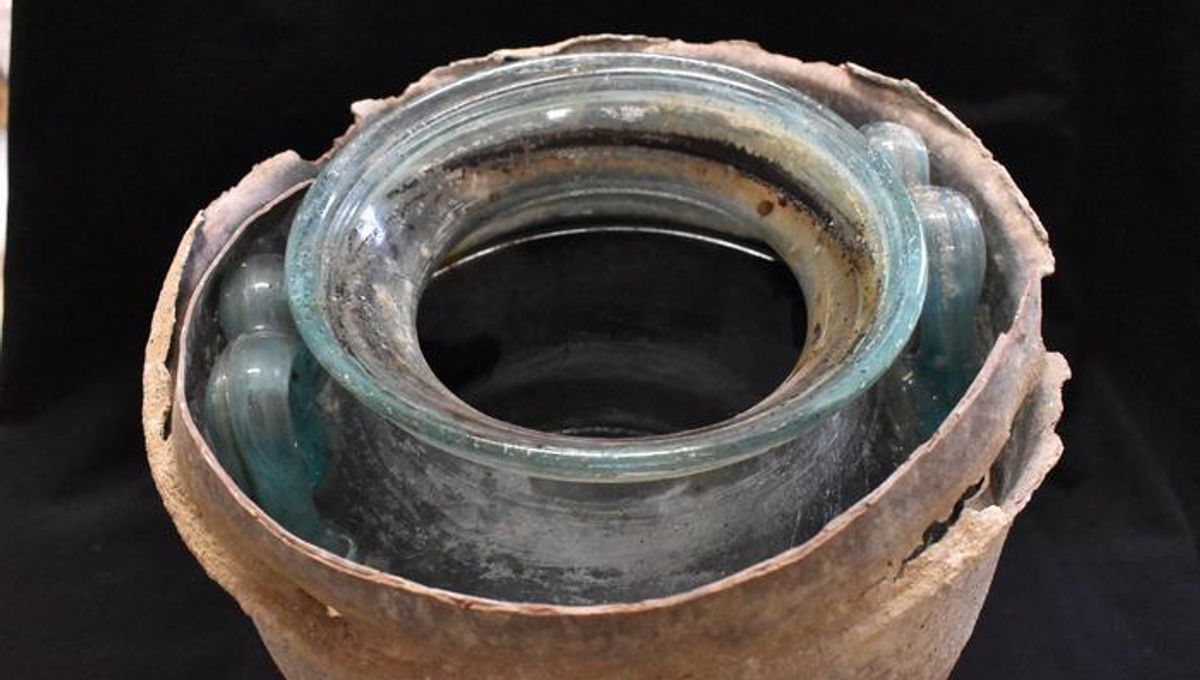
A man who died 2,000 years ago in southern Spain had his ashes infused in white wine, probably as part of some sort of ritual to assist him in his journey through the afterlife. Amazingly, the urn containing his booze-drenched remains has managed to keep the ancient plonk from deteriorating, making it the oldest surviving wine in liquid form ever discovered.
The urn was initially retrieved in 2019 when excavation work in the city of Carmona revealed an underground Roman mausoleum that is thought to have been constructed for a wealthy local family. Within the chamber, researchers discovered six ash-filled urns, each belonging to a different person.
One of these urns – which contained the cremated remains of a male individual – was also “filled to the brim with a reddish liquid,” explain the authors of a new study. Based on the excellent state of preservation within the subterranean tomb and the fact that all the other urns remained bone dry, the researchers immediately ruled out leakage as an explanation for this strange fluid, suspecting instead that it may have been Roman-era wine.
Seeking clarification, the study authors analyzed the liquid’s chemical composition and compared it to that of modern wines from nearby vineyards in places like Jerez, Montilla-Moriles, and Sanlúcar.
“The mineral profile of the reddish liquid is comparable to that of current sherry wines from Jerez, fino wines from Condado de Huelva, and fino wines from Montilla-Moriles − a designation of origin not far from Carmona,” they write.
To reliably identify the ancient substance, the researchers inspected it for key biomarkers known as polyphenols. In doing so, they discovered that the two most concentrated flavonoids present in the liquid were quercetin and apigenin, which matches up well with modern wines.
Overall, the authors identified seven polyphenols that are also present in wines from Montilla-Moriles, Jerez, and Sanlúcar, while the absence of syringic acid indicated that the wine was in fact white – in spite of the reddish hue it has acquired over the years.
“The results obtained in this work strongly suggest that the reddish liquid in the ash urn was originally wine that decayed with time, and that it was about 2000 years old, and hence the oldest wine found to date,” they conclude.
And while little is currently known about the identity of those housed within the mausoleum, engravings on two of the six urns indicate that the long-dead group includes a pair named Hispanae and Senicio. As for the purpose of the ancient booze, meanwhile, the researchers explain that “the urn must have been filled with wine in a sort of libation ritual in the burial ceremony or as part of the burial rite to help the deceased in their transition to a better world.”
The study is published in the Journal of Archaeological Science: Reports.
Source Link: World’s Oldest Liquid Wine Contains Surprising Ingredient – Cremated Human Remains